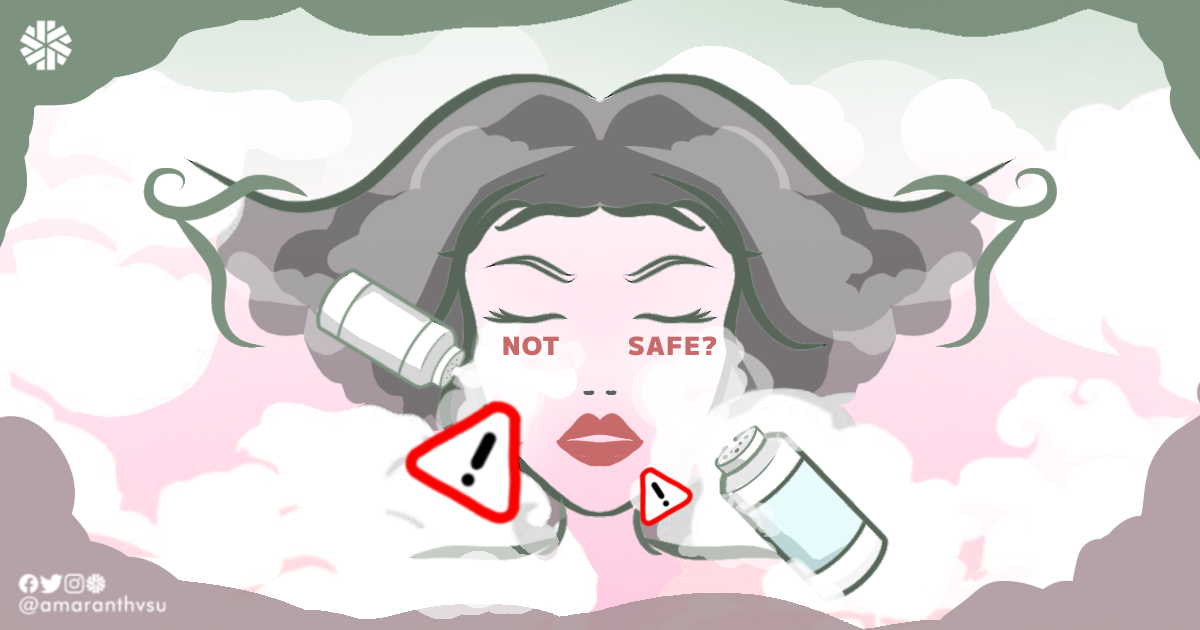In the ever-evolving world of cosmetics, makeup enthusiasts continuously seek innovative and affordable beauty hacks. Hidden in the depths of every household lies an unsung hero that has been serving beauty enthusiasts for decades: baby powder. Beyond its traditional use in infant care, baby powder has emerged as a surprising and effective alternative in the world of makeup. It is a go-to product for every student on a budget who desires to maintain a fresh appearance amid a very hectic school schedule.
The allure of using baby powder as makeup lies in its affordability and shelf life–something that most high-end makeup products fail to achieve at the expense of their consumers. Baby powder also plays a significant role in infant care to maintain dryness and comfortability. However, baby powders contain a potentially harmful ingredient known as talc.
The popularity of using a talc-containing product as a makeup alternative has sparked concerns about its potential harmful effects on consumers' health and well-being. Thus, its transition into the realm of cosmetics demands careful examination.
Talc’s Origin and Risk
Talc is a mineral renowned for its softness and absorbent properties that is extracted from underground clay deposits. Geologists warn that since asbestos is frequently present in talc deposits, there is a risk of cross-contamination. Asbestos is a group of naturally occurring minerals that are known for their fibrous, heat-resistant properties. When inhaled, asbestos fibers can become lodged in the lungs and cause serious health issues, including lung cancer, mesothelioma, and other respiratory diseases.
The presence of asbestos in talc products has prompted regulatory bodies to impose strict testing and quality control measures to ensure that consumer products containing talc are asbestos-free. Certain regulatory agencies have set limits for the presence of asbestos in talc used in cosmetic products, including baby powder.
One notable brand of baby powder in the country—a household staple—is Johnson’s baby powder. The legal battles surrounding Johnson & Johnson's talc-containing product (in North America) have been a subject of widespread public concern and debate. Allegations of the harmful effects of talc on consumer health, with its particularly possible link to ovarian cancer, have led to numerous lawsuits and raised questions about corporate accountability and consumer safety in the beauty and personal care industry.
The company's compensation to individuals who claim harm from their talc-based baby powder underscores the importance of transparency, responsible practices, and adherence to rigorous product testing.
Safeguarding Consumer Health: The Need for Transparent Practices in the Beauty Industry
Despite Johnson & Johnson's decision to discontinue their talc-containing baby powders globally due to mounting concerns about potential health risks, this critical information has not yet reached the majority of the general public in the Philippines. As a result, there are still individuals who continue to use this product (as it is still readily available in local stores), unaware of the potential dangers associated with the ingredient. This knowledge gap highlights the importance of disseminating accurate and up-to-date information regarding the risks of talc use to ensure the safety of consumers.
Fortunately, the beauty industry offers a plethora of safe and effective alternatives to talc-based makeup products. Ingredients like cornstarch and rice powder serve as suitable replacements, providing similar texture and oil-absorbing properties without the potential health risks. Manufacturers and consumers should prioritize the use of these safer alternatives to promote skin health and overall well-being.
While baby powder containing talc has traditionally been revered for its use in infant care, it should not be considered an appropriate makeup product. The potential health risks warrant necessary caution and a reassessment of the use of talc in makeup products. Additionally, empowering consumers with information about potential risks and promoting safer alternatives should be a priority for companies seeking to build trust and ensure long-term success.
Ultimately, through transparent practices, regulatory cooperation, making informed choices, and encouraging responsible practices, we can safeguard the health of individuals and promote a beauty industry that prioritizes consumer safety above all else.


